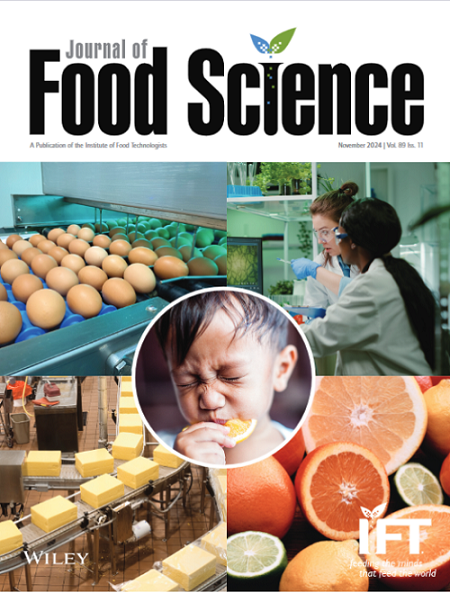Study of Influence of Mixed-Mode Solar Drying on Chlorophyll, Ascorbic Acid, Carotenoid, and Antioxidant Activity of Medicinal Leaves of Ageratina Variety pichinchensis
Abstract
ABSTRACT
Ageratina pichinchensis leaves are a valuable product with a presence of bioactive compounds that require alternatives for preservation for their perishable nature, so the present research was aimed to evaluate the physicochemical properties and bioactive compound preservation of the Ageratina medicinal leaves variety A. pichinchensis using sustainable drying methods based on renewable energies versus conventional electric dryers. Unifactorial design was adopted studying the type of dryer: open sun, oven, electric controlled conditions dryer, solar dryer with mesh shade (50% and 90%), and indirect solar dryer. Fresh leaves moisture content was 76.45% and water activity 0.995. The colorimetric analysis results were as follows: lightness 34.58, a −10.90, b 22.14, chroma 22.14, and hue angle 119.50°. Chlorophyll content was 0.129 mg/g dry weight, carotenoids 2.045 mg/g dry weight, and ascorbic acid 403.742 mg/100 g dry weight. Indirect solar drying and 90% mesh shade reached the highest chlorophyll content 6.814 and 6.052 mg/g dry weight, respectively. Carotenoids showed an increase with oven drying (18.468 mg/g dry weight), attributed to the short time of drying process. Antioxidant activity of dried leaves was from 90.606% to 94.924%. The lowest color difference (4.56) was obtained in solar drying (90% mesh shade). Indirect and 90% mesh shade solar drying better preserved the leaves properties, demonstrating the effectiveness of the solar drying method to produce high-quality products for different applications. Although open sun drying is an economical technique, its benefits are partially diminished by various issues such as damage from rodents, birds, and insects; contamination from dust; exposure to rain; and the risks of either over-drying or under-drying.
Practical Application
According to the results from this investigation, indirect solar drying and solar drying using mesh shades are sustainable alternatives to preserve herbs that not only supply a characteristic flavor to food products but also have some therapeutic and medicinal effects that can become value-added ingredients for various supplements, drugs, and medicinal products. We consider that this investigation made a great contribution and impact to the field of medicinal herb preservation and its applications in the food and pharmaceutical industries. This could benefit the producers to take advantage of the herbs they cultivate and promote their usage and commercialization with added value due to the health contributions that medicinal herbs could bring to possible consumers in addition to the use of easy, sustainable, and cheap equipment.


 求助内容:
求助内容: 应助结果提醒方式:
应助结果提醒方式:


